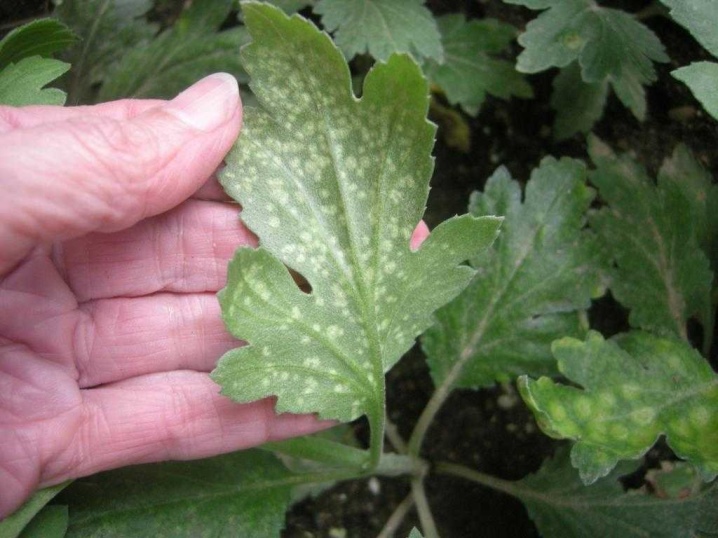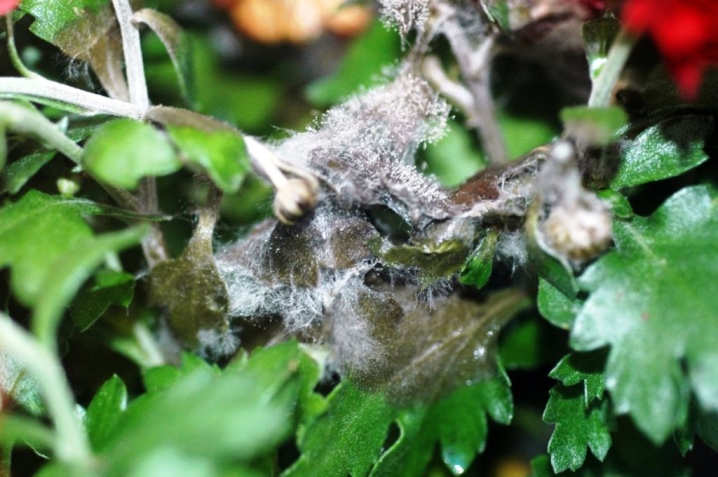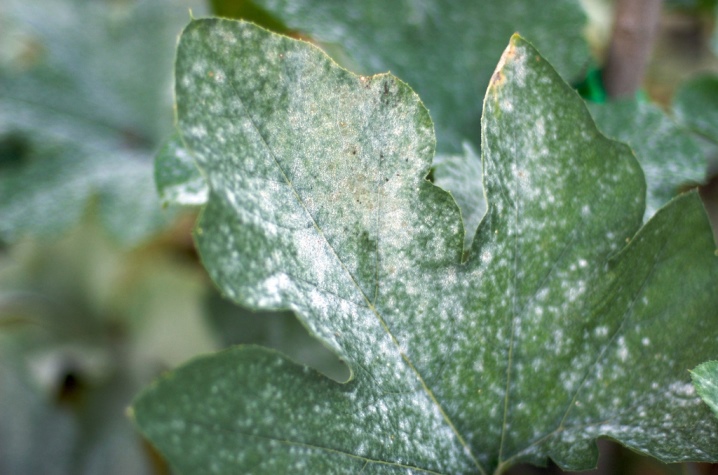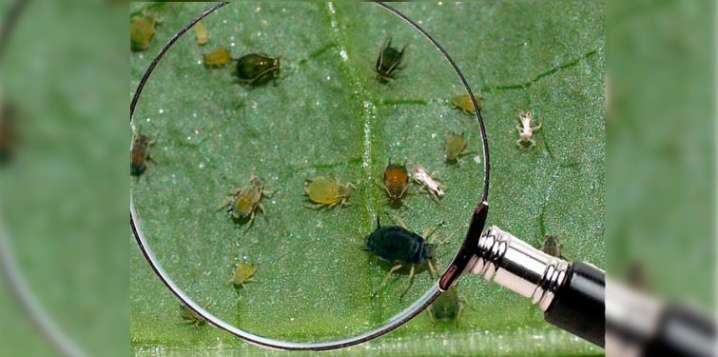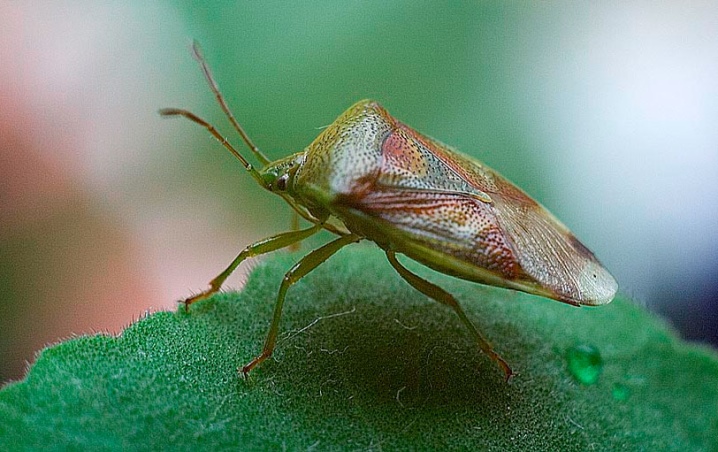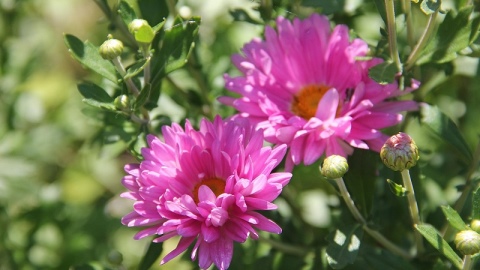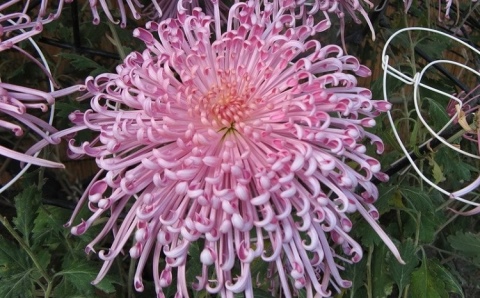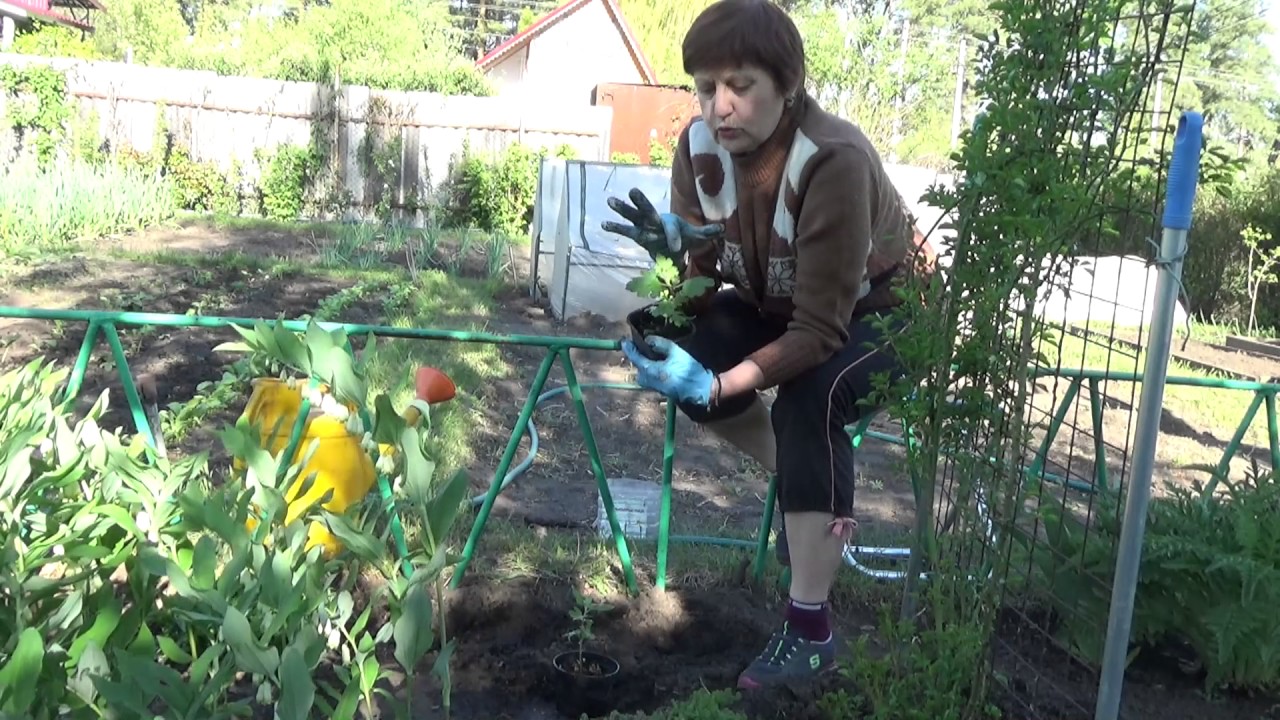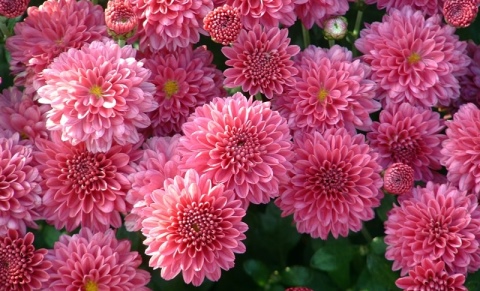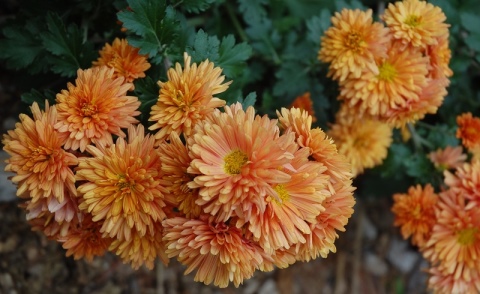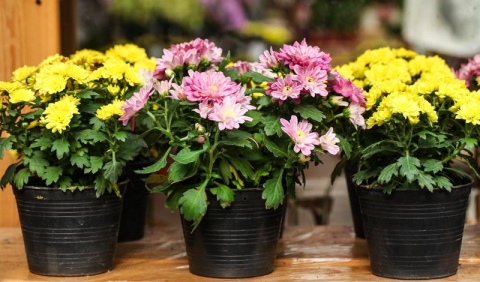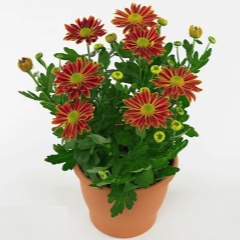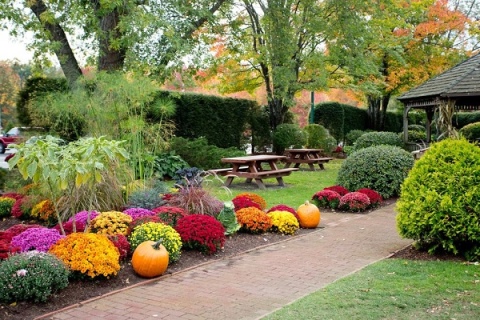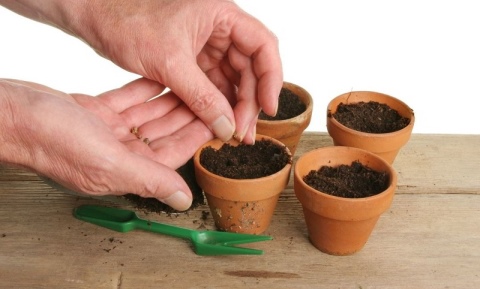Step-by-step instructions for sowing chrysanthemums for seedlings
Planting seeds of perennial and annual chrysanthemums for seedlings at home includes, in addition to the procedure itself, several other activities - choosing a planting container, selecting and preparing seeds, preparing a soil mixture. Qualitatively and correctly sowing and all related activities will help you with step-by-step instructions that will tell you about all the steps.
Step one: selection and processing of the container
For planting chrysanthemums for seedlings, you can use wide and shallow general containers, such as wooden or plastic boxes.
If you do not want to waste your time on picking, then you can immediately sow the seeds in individual volumetric containers, for example, in plastic cups, peat, cassettes, peat tablets.
It is recommended to decontaminate containers before use. You can pour over them, for example, with a solution of potassium permanganate.
Step two: selection and preparation of seeds
In order to grow a beautiful and healthy chrysanthemum from seeds, it is necessary to plant high-quality seeds on seedlings. You can collect them yourself from the flowers that you grow, ask a friend who grows a plant on your site, or buy them in a store.
If the latter option is convenient for you, then keep in mind that you should buy seeds in reliable and trusted stores that have good reviews from real buyers.
Chrysanthemum seeds are small, so you need to handle them carefully so as not to accidentally spill everything by. The photo shows what the seeds of this culture look like:
Seeds should be disinfected before planting. You can do this with a solution of potassium permanganate, chlorhexidine, brilliant green (just immerse the seeds in a cloth bag for half an hour in the solution, and then rinse). Or make a solution of the drug "Fitosporin" and soak according to the instructions.
Step three: soil preparation
Chrysanthemum seedlings, like an adult plant, love loose, light and fertile soil. If it is more convenient for you to use a ready-made soil mixture, then you can buy a universal soil for flower seedlings. And you can make soil with your own hands at home. To do this, mix the following ingredients in equal proportions:
- land from the garden;
- peat;
- humus.
Be sure to prepare the soil before sowing. First of all, you need to disinfect the earth in order to destroy pathogens. Bake it in the oven (30 minutes at 90 degrees) or hold it over steam (1 hour), and then spill it with a solution of the "Fitosporin" preparation.
In order for the soil for growing chrysanthemum seedlings to have a good structure, it is imperative to sift it through a sieve.
Step four: direct seeding
The scheme for sowing chrysanthemums for seedlings at home in a common box:
- Place a drainage layer (no more than 1 cm) on the bottom of the container, for example, sand, small expanded clay.
- Fill the container 2/3 full of soil, moisten with warm water.
- Pour a thin layer of sand on top, moisten the sand again from the spray bottle.
- Sow evenly, the seeds should not be too close to each other (the optimal distance is 3 centimeters from each other).
- You do not need to fill in the seeds from above, they germinate in the light. Just press them gently into the ground with your palm!
- Spray from a spray bottle and place in a warm place with a temperature of 22-25 degrees Celsius.
Sowing peat tablets
You can plant chrysanthemum seeds and peat tablets. To do this, they must first be prepared - left in a pan with warm water for half an hour. When they swell, sow 2-3 seeds in the middle of the tablet.And then also cover with a film or a lid, put in a warm place.
Potted Chrysanthemum Varieties
In the fall, you can find many of these flowers in flowerpots in flower shops. Some buy a plant in this form for a gift, and many amateur flower growers successfully grow this culture on their windowsill all the time.
Indian chrysanthemum - mix
You can grow more than one plant in a pot, but make a whole set (mix). Then the freshness of greenery and a variety of colors will delight you throughout the autumn period and more.
All plants in the set need the same care, which is very convenient. Such a bright and colorful palette will brighten up any interior. Long bloom will add a festive mood.
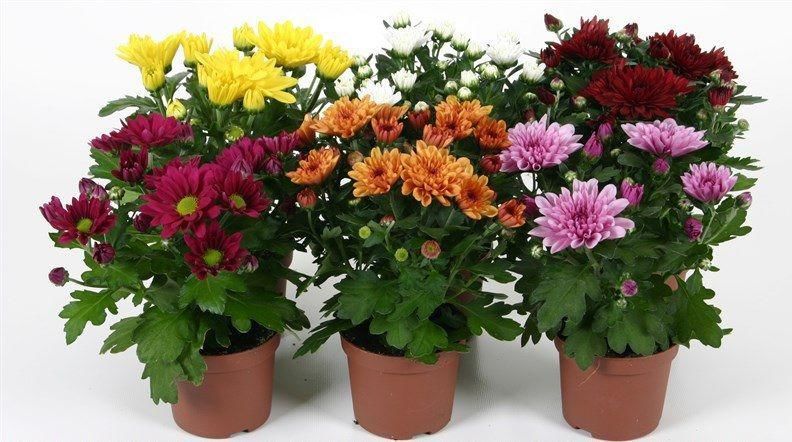
There are many varieties for indoor growing. Garden plants are not recommended to grow at home, there is too little light and space. Therefore, before purchasing, ask the seller which variety to choose for planting and growing indoors. Let's consider some varieties:
Chrysanthemum spray "Artist"

The plant is in the form of a small bush, blooms for a very long time. The bush is neat and compact. Chamomile-type flowers have an unusual variegated color, which is varied: pink, cream or yellow with white stripes, the length of the flower is no more than 5 - 6 cm.The height of the bush is only 30 cm.
Barolo
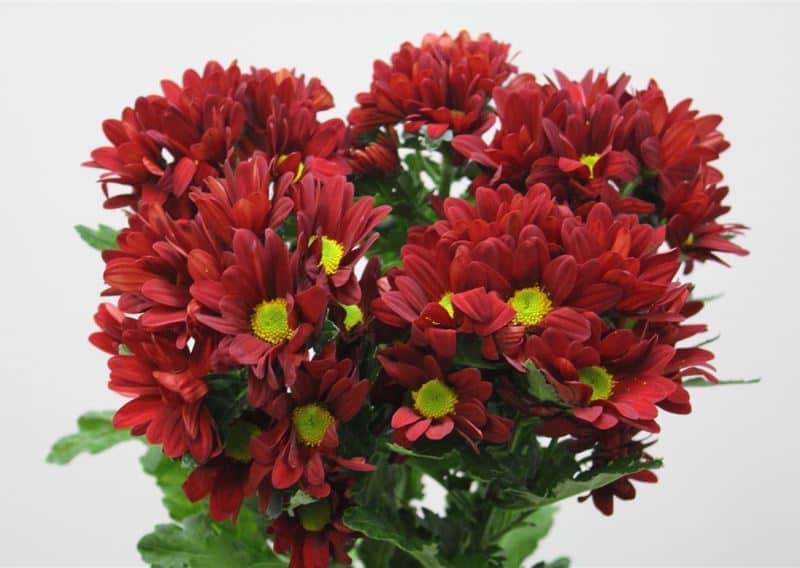
- The variety was bred in Italy, small, inflorescences in the form of baskets with a circumference of 5 - 7 cm, which gives the plant splendor and density.
- The stems are dense and elastic, straight, the height of the bush reaches 50 - 60 cm.
- The petals are elongated, red, of a single color with a bright yellow core.
- The foliage is dark green, the surface is smooth, the structure of the leaf plate is pinnately divided.
- A variety has been bred for cutting, the flower can stand in a vase for up to 3 weeks. But even in a pot it looks very impressive.
Grandeza
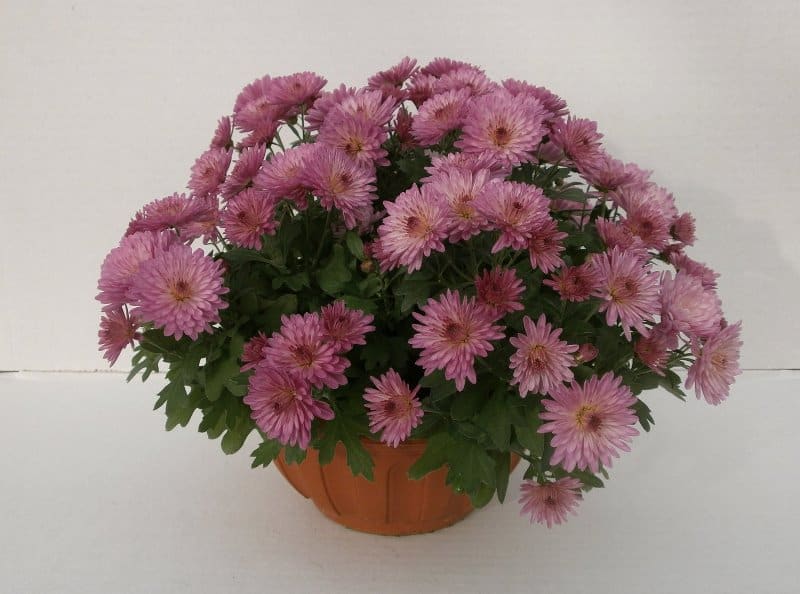
The plant has semi-double flowers. Can be grown both in cut and pot. Petals of different colors (mix) are distributed in several tiers. The size of the baskets is small - up to 7 cm.The height of the bush is only 30 - 40 cm.
Fanfare
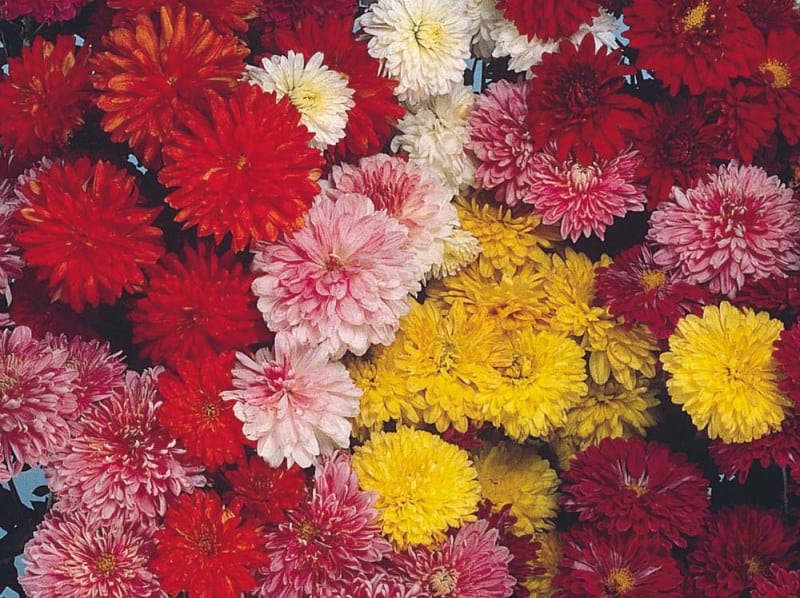
- Mix of colors.
- Stems are straight, dense and elastic, about half a meter high.
- The structure of the flower is semi-double, the flowers are collected in inflorescences with a diameter of 5 - 6 cm.
- The variety is early, blooms for a very long time. Can be grown in the garden, outdoors.
Royce Lovely
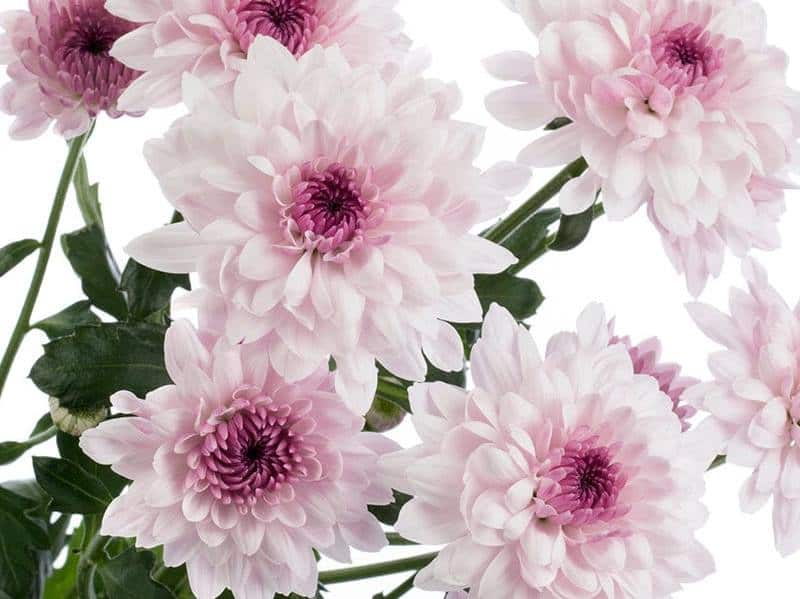
Very delicate and beautiful inflorescences up to 6 cm in diameter. The color varies from dark lilac in the center to almost white at the edges. Shoots are upright. The bush stretches up to 70 cm. It blooms for a long time.
Golden gloria

Bushes are dense, stems are erect, dense. The leaves are dark green. Inflorescences are single, bright yellow, double.
Also, there are such indoor potted varieties as: Old Gold, Vorifolium, Althold, Snow Elf, Aurora, Zembla mix and others.
Which chrysanthemum to choose when buying?
a flower purchased in a store is distinguished by its small size and compactness of the bush. Such parameters are achieved with artificial regulation of growth when grown in a greenhouse. This gives it a decorative look.
The mistake of many novice florists is that trying to grow a chrysanthemum on their own at home, they got a large plant. It was clearly not suitable for potting.
Therefore, it is imperative to know all the rules for growing this flower indoors.
When buying, be sure to pay attention to the condition of the branches and stem: whether the flower looks healthy and whether there are insects on it. Experienced growers recommend quarantining the plant for a few days for better adaptation.
Observe the plant so that it does not infect other indoor flowers or catch the infection on its own. Only then take it completely into your floral collection.
Diseases and pests
Unfortunately, the plant is attacked by garden pests, and can also become the target of diseases and viruses.
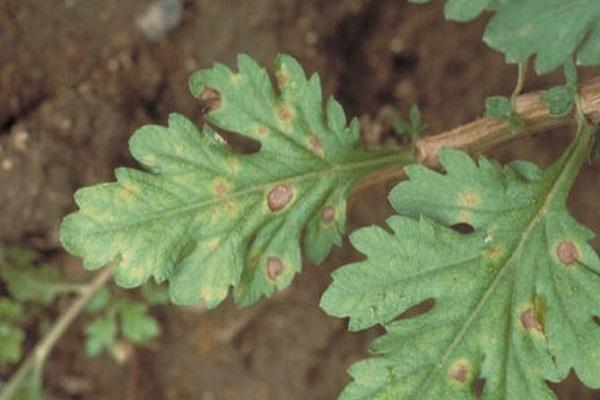
Chrysanthemum nematode
A worm characterized by the appearance of rapidly darkening pale yellow spots. The best method of control is to carefully remove weed residues and foliage in the fall, in which nematodes may be hiding.
Spider mite
Ticks love chrysanthemum juice, gradually leading the plant to exhaustion. Their presence is indicated by whitish threads and drying of leaves. The easiest way to get rid of the pest is to spray the flower with water.
Aphid
Small bugs multiply quickly, capable of destroying large plantations of horticultural crops in a short time. To eliminate the threat, folk methods, chemistry, and loosening of plantings are used as well.
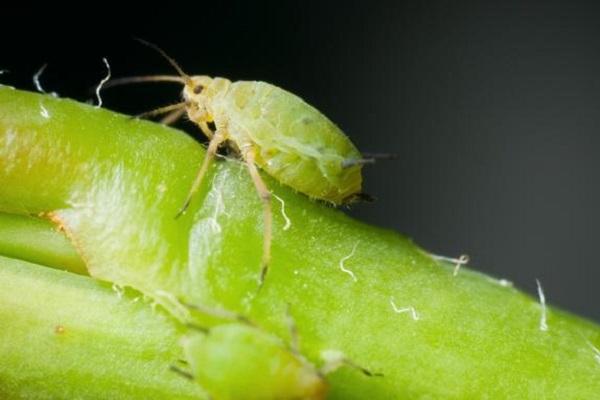
Powdery mildew
Waterlogging of plants leads to the development of powdery mildew. The best prevention is adherence to the planting scheme (at least 40 centimeters between neighboring bushes), pinching, ensuring optimal moisture.
Classification of Korean chrysanthemums
Speaking about the classification of oak trees, you need to understand that they are not taken as an independent species. These are hybrids adapted to open ground, which means that their classification is the same as for any garden chrysanthemums.
By the size of inflorescences, they are divided into small-flowered - up to 10 cm and large-flowered - over 10 cm in diameter.
By the shape of inflorescences, small-flowered oaks are divided into:
- Simple. Reed petals are arranged in 1-2 tiers around a large number of tubular petals growing in the middle.
- Semi-double. Lingulate petals are arranged in 3-5 tiers around the pith.
- Anemonic. Marginal reed petals of equal length. The disc is raised in the form of a convex hemisphere.
- Pompom. Small (2-3cm) globular inflorescences consist of a large number of reed petals.
- Terry. Inflorescences-baskets consist of many densely growing reed petals of various shapes and sizes. Tubular petals grow in much smaller numbers in the center.
By height, Korean hybrids are divided into low-growing (curb) up to 30 cm, medium-sized - up to 0.5 m and tall - up to 1 m.
The flowering period of Korean hybrids is already quite long, and if faded buds are removed in time, it can last up to 4 months. At the same time, early simple and semi-double species give seeds.
Description of the plant
Chrysanthemum is loved by many gardeners not only for its beautiful flowering, but also for the fact that it is one of the last to bloom and pleases the eye with its gorgeous appearance until the very cold weather. This flower is found naturally in China, North America, Asia and Europe. Chrysanthemum has many varieties, numbering about 150 pieces.
The cultivation of this flower takes place both at home and in the summer cottage. In the latter case, only two varieties are used:
- Korean
- ground chrysanthemum.
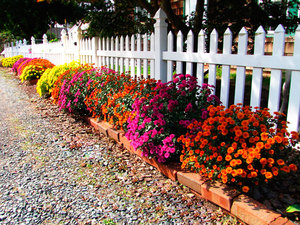
It belongs to the Asteraceae family of Compositae. It begins to bloom in September and ends in a month, in October. The height of the shrub is from 30 to 110 cm. The higher it is, the more flowers are formed on it, and under favorable conditions, up to 100 inflorescences with a double or semi-double surface can appear. The branched roots of the plant can penetrate the soil to a depth of 20 cm.
For growing on personal plots, the following types of chrysanthemums are most often acquired:
- Alpine;
- Crowned;
- Keeled;
- Shrub;
- Chinese;
- Korean.
Hybrid varieties tolerate temperature extremes and bad weather much easier. They are less likely to be affected by pests and various diseases, and they differ in a long flowering period.
It is interesting: Cutting chrysanthemums at home from a bouquet
Vegetable chrysanthemum: growing
The “eastern visitor” is picky in cultivation and does not need careful maintenance and care, but their development is very dependent on the soil. It should be fertile, so it is better to plant vegetable chrysanthemums after any vegetable crops, under which organic fertilizers were applied in the previous season.On depleted land, the plant blooms ahead of time, which is unacceptable for vegetable varieties, they grow weakened, and their green mass quickly becomes coarse.
This crop is sown in early spring, in the second decade of April, in a greenhouse, greenhouse or greenhouse. In early May, the seedlings are transferred to open ground.
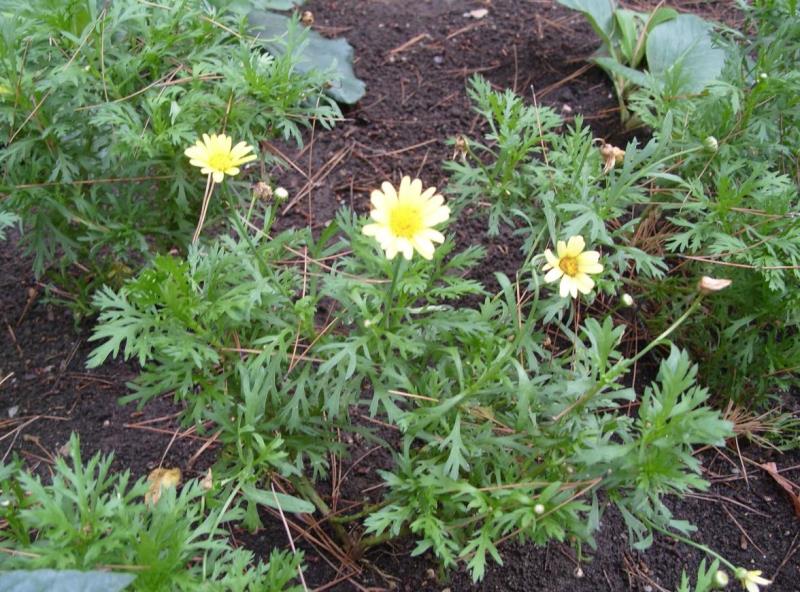
Pits for seedlings are dug at a distance of 15–20 cm. The optimal planting method is in nests, 4-5 pieces each with a lumen of 25-30 cm. Many gardeners use the fact that this plant is not only nutritious, but also decorative and blooms until frost, and plant it not in ordinary beds, but in flower beds or along paths.
Since chrysanthemums of vegetable varieties are cold-resistant, they can easily withstand temperatures up to -3 degrees, seeds can be sown in open ground immediately. But in this case, the seedlings and the first vitamin greens will appear 1-14 days later.
After planting on the street, the seedlings or seeds are covered with a covering material. The film is removed when the sprouts are sufficiently strong.
When the first true leaves are formed on the stems, they are thinned out. The removed sprouts are used as a seasoning. In order not to injure immature plants, they are picked selectively, one or two from each flower.
After the first buds are tied, they are harvested together with the leaves once a week. If you do this regularly and do not forget to pinch the tops, young shoots on the stems will grow until late autumn. If the inflorescences and buds are not plucked, the vegetable chrysanthemum will coarsen and, when fresh, will become unsuitable for food.
Caring for the "eastern guest" is reduced to the destruction of weeds and limited (during drought) watering. Systematic watering is carried out only after sowing, when seedlings hatch, immediately after transplanting seedlings into open ground and at the initial stage of growth. To eliminate the need for loosening and the greens remain clean, the ground around the stems is mulched.
Vegetable chrysanthemum does not need feeding when grown on fertile soil. An exception can be made for potash fertilizers, as a rule, there is not enough potassium in our soil. Adding ash solution 2-3 times per season will help to correct the situation.
Growing seedlings of chrysanthemums from seeds
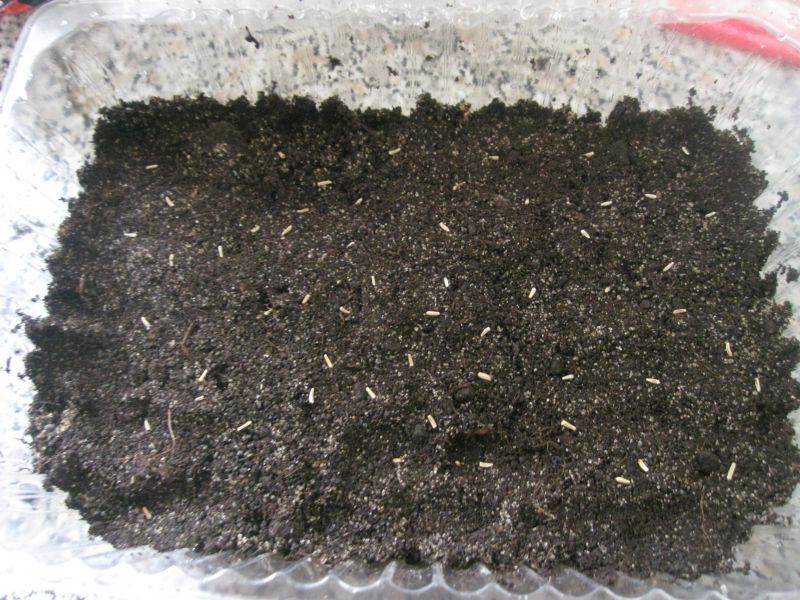 Sowing chrysanthemum seeds for seedlings
Sowing chrysanthemum seeds for seedlings
Sowing seeds for growing seedlings is carried out in early spring in moist soil, collected equally from peat, humus and greenhouse soil. You can buy ready-made seed mixture in a specialized store, and as a rule, it is already ready for use, or you can make it yourself. In this case, before sowing chrysanthemums, it must be sterilized with a weak solution of potassium permanganate, followed by drying (a solution of potassium permanganate is prepared by the "eye": the water in this case acquires a pale pink color). And then you still need to disinfect the soil mixture itself. For sterilization, the substrate is sieved and calcined in the oven for 15-20 minutes at a temperature of 120-130 degrees.
To sow chrysanthemums with seeds and grow seedlings, you need a shallow box. A drainage layer of expanded clay or brick chips is laid on its bottom. Prepared soil is poured on top, leveled and spread seeds on its surface, pressing them slightly. It is not necessary to sprinkle them with earth: in order for the sprouts to hatch, light is needed.
Then the ground in the box is sprayed from a spray bottle with pre-prepared settled water at room temperature and covered with glass or transparent film. Before the seedlings emerge, the room temperature must be maintained within + 23- + 25 degrees. The cover is removed from time to time to ventilate the seedlings, condensation is removed from it, and the substrate is regularly sprayed to avoid drying out.
Care rules

In order for the plant to grow well and give color, you should adhere to some recommendations and rules in care. Then the magnificent inflorescences will delight you all autumn.
Temperature regime
No more than +15 degrees above zero is considered the most comfortable for chrysanthemums. If the thermometer shows more than +18, then the plant does not like it. It loves coolness and a little light.
If it is hot and stuffy in your house, then the leaves of the flower will begin to dry and turn yellow. Flowering may stop altogether. Flowers that have recently appeared and have not yet had time to properly adapt are especially affected by this temperature.
Indian chrysanthemum does not need direct sunlight. However, it is not recommended to put it in the shade: about 7 - 8 hours of daylight is enough. Try placing it in a place where the lighting is diffused. The west or east side is very suitable.
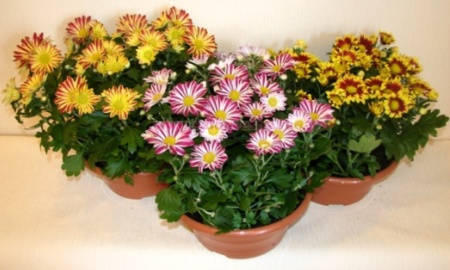

Humidity
- The flower needs constant soil moisture, so water the plant regularly. You can periodically spray the bush, especially in hot weather. Do not allow the soil to dry out in the pot.
- On autumn days, you can open the window and put the flower on the windowsill. He is not afraid of drafts. And if there is light rain outside, the humid air will only be beneficial. Especially if the plant stands all the time near heating devices or a radiator.
Fertilization and watering
It is necessary to regularly moisten the soil, but it is not worth pouring the plant. Excess moisture can lead to fungal infections and root rot.
- It is not recommended for the potting soil to dry out. It is better to water little by little, but often.
- In autumn and winter, the plant is watered once a week in the morning.
- In the spring and summer period, it is advisable to water at least 2 times a week, as well as spray water in the air during hot times of the day.
- It is not recommended to touch the inflorescences when spraying the entire bush.
- The water should first be defended and the soil should be watered with lukewarm or room temperature water.
Fertilizers and feeding are needed for chrysanthemums during flowering. Potassium and phosphorus will do. In order to develop more green mass, nitrogen-containing ones are recommended.
Bush formation, pruning
When the chrysanthemum bush just appeared in the house, then at first, of course, it retains its shape, but then elongated shoots begin to grow out of the total mass. The plant gradually begins to lose its attractiveness and neat appearance.
- If the flower grows too much, then pinching the shoots is done. In varieties with small flowers, pinch the tops several times.
- If the hybrid is large, then you need to shorten the main stem and lower branches. You can form a small tree.
- It is imperative to remove inflorescences that have faded. This procedure promotes the setting of new buds.
When the flowering period is delayed, the upper shoots should be shortened. Then all forces will go to flowering. The last time the twigs are pinched 14 days before the beginning of flowering.
This is interesting: How to keep cut chrysanthemums in a vase longer: expert advice
Description
It is a fairly large perennial plant. Indian chrysanthemum in the garden grows up to 1.5 meters. It has simple stems, serrate-toothed leaves (dissected). The inflorescence is a basket in which the seeds ripen by December. It begins to bloom actively in September-November.
Under natural conditions, the Indian chrysanthemum is distributed throughout Europe, the Middle East, the Caucasus and India. Outdoors, these plants grow only in the southern regions. For the duration of flowering, only orchids can compare with these magnificent flowers. But one of the advantages of chrysanthemums is the flowering time - late autumn, when the brightness of natural colors is already muted
These luxurious flowers attract increased attention of lovers and connoisseurs of natural beauty.
Large chrysanthemums began to be called Indian, since earlier all oriental plants were called that way. To date, more than ten thousand varieties of Indian chrysanthemums have been bred. All of them differ in the shape of leaves and flowers, color, size.Indian chrysanthemum with large flowers is especially attractive, but it is the most difficult to grow it for a beginner grower in the garden. True, applying the advice of experienced florists and preparing everything you need, you can grow gorgeous flowers that will not only decorate the site, but also become your pride. There are two methods for growing garden and indoor chrysanthemums.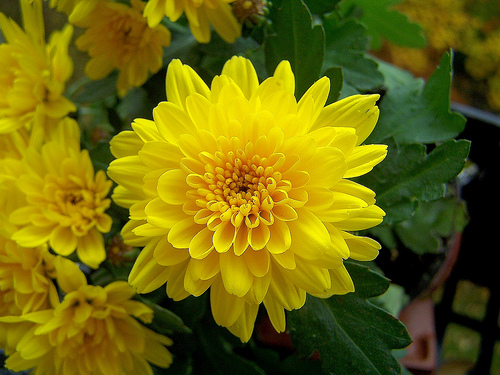
Chrysanthemums: planting and care
Chamomile chrysanthemum
And if you really want to plant chrysanthemums in the garden in the fall. It is better to buy planting material at the end of August.
And if bought at the end of September, then when planting, it is imperative to cut the flowers, and with the arrival of frost (-3) they are covered with branches of spruce branches.
And for better wintering, plant chrysanthemums in elevated, unsinkable places, sheltered from the wind and, of course, sunny.
Flowers prefer loamy soil with the addition of leaf humus. Chrysanthemum responds best to leafy humus.
You can fertilize with compost, but only well rotted, ideally, so that it was about 3 years old. Dung with sawdust is unacceptable, chrysanthemums do not like it.
A planting hole for flowers is dug 2 cm more of an earthen coma. In hot weather, it is advisable to water the seedlings.
The root collar should be almost level with the soil. It is not necessary to deeply deepen it. If you bury it deeper than 1 cm, it can start to rot.
If you buy seedlings, then plant approximately in the same way as the plant grew before you, then you will definitely not miss.
Soil and fertilizer for chrysanthemums
Chrysanthemums need rich, nutritious soil to flourish. From autumn it is best to fill with organic matter.
As I said, humus is better than dung. And another important component is Phosphorus.
You can add phosphorus superphosphate in the fall and properly embed it in the soil.
In the summer in early June, you can add ammonium nitrate.
In general, during budding, potash - phosphorus fertilizers, and during the growth of green mass - nitrogen fertilizers (urea, ammonium nitrate or sulfuric acid potassium).
Reproduction of chrysanthemums
Chrysanthemum cuttings can be carried out in winter if there is a suitable room with a temperature of + 16 - +18 degrees. You will also need additional lighting up to 15 hours a day.
The optimal period for rooting cuttings is April - May in a greenhouse. A mixture of peat and sand or pure perlite is best suited for planting.
Many of us are presented with bouquet chrysanthemums, usually with a lush white bud. Cut chrysanthemums with large white caps are former Indian chrysanthemums.
It is very difficult to graft them, they take root hard. In our country, they can only grow indoors and their flowering occurs in November - December. That is, they are exclusively greenhouse.
But, personally, I found reviews of some flower growers who claim that they have purchased white chrysanthemums in the garden and winter without shelter. I have not yet tried to grow "white bubons" on my site, so I cannot refute but confirm the information.
A chrysanthemum can grow in one place for a maximum of 3 years. Over 3 years, the plant greatly loses its decorative effect (smaller flowers, smaller leaves).
Chrysanthemum species
There are two types of chrysanthemums: Indian and Korean. Indian is a short day plant. The Korean chrysanthemum has proven itself better. She has gained great popularity among our compatriots.
The flowering of the Korean woman begins from July until the very frost. Korean chrysanthemum is a conventional name for all small-flowered plants. The first varieties were obtained at the beginning of the 20th century by crossing the Siberian, brought from Korea, with the cultivar Ruth Hatton.
Today there are a huge variety of varieties of various colors, differing in the size of the bush. By the type of flower, terry and chamomile chrysanthemums are distinguished. All of them are resistant to adverse conditions and low temperatures.
Autumn is the time of blooming chrysanthemums.Therefore, many growers make the same mistake. They buy planting material also in autumn days. It is best to plant chrysanthemums in early summer. The most suitable planting days are from 1 to 10 June.
Pests and diseases
Chrysanthemums are famous not only for their frost resistance, but also for their high immunity against the background of their innate ability to effectively resist diseases and pests. However, he is not a gardener who relies only on the natural defense mechanisms of his wards. The attack can appear unexpectedly - and you need to know what it looks like and what to do. We will consider only the most common problems and solutions for them.
White rust. On the leaves, characteristic round spots of yellow appear, prone to a gradual transition to brown shades. The affected organs of the bush cannot be restored - they can only be removed, but everything that remains should be treated with antifungal agents.
